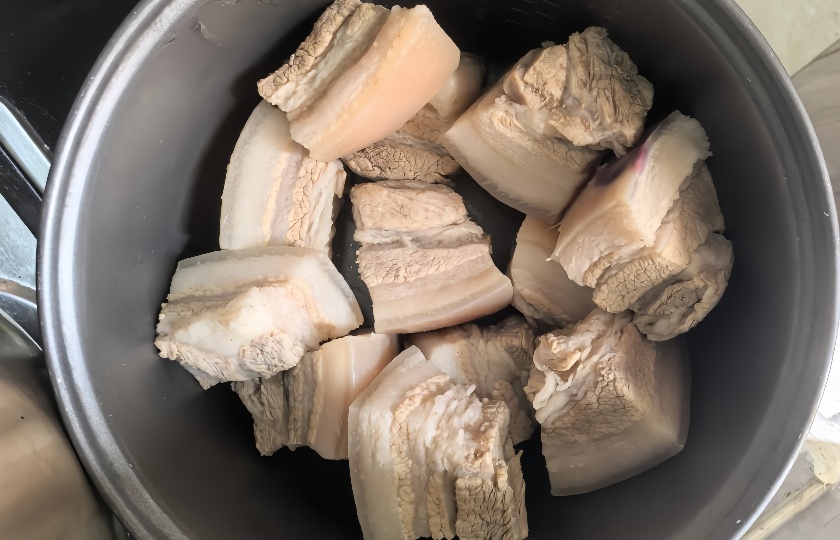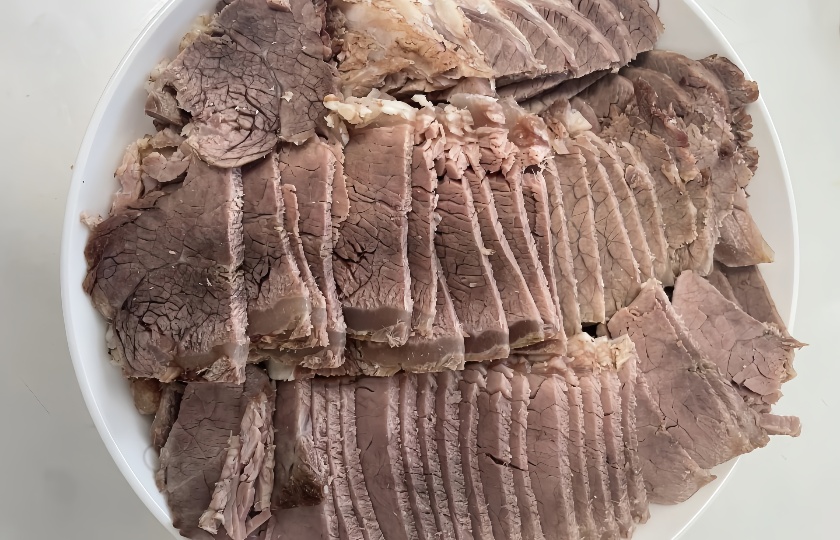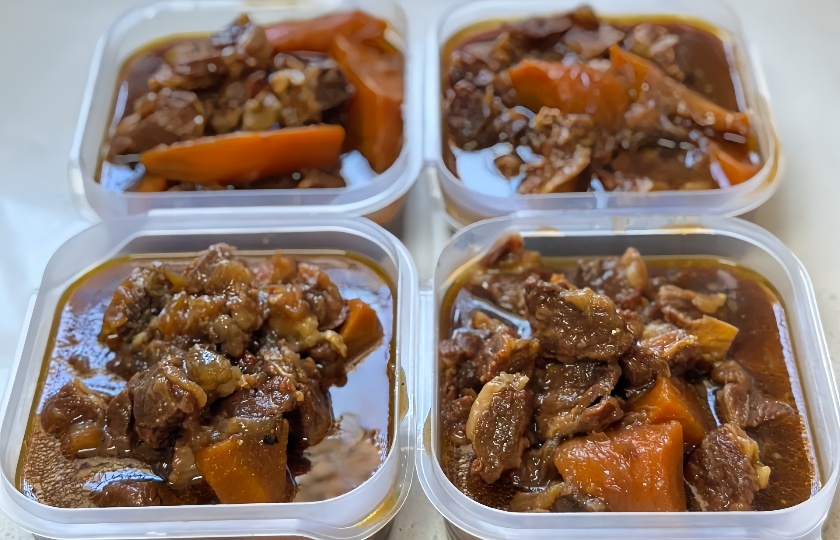Essential Tips: How to Chill Meat Effectively After Cooking?
 Today, let's talk about a small detail in cooking that really impacts both the safety and taste of our food! Have you ever finished cooking meat and wondered how to cool it quickly and effectively, worrying that it might spoil or lose its texture? Don’t worry! Today, I'm going to share some super practical tips to help you easily solve this problem.
Today, let's talk about a small detail in cooking that really impacts both the safety and taste of our food! Have you ever finished cooking meat and wondered how to cool it quickly and effectively, worrying that it might spoil or lose its texture? Don’t worry! Today, I'm going to share some super practical tips to help you easily solve this problem.
What are some effective ways to cool meat after cooking?
Here are some effective methods for cooling meat after cooking
Step-by-Step Cooling Method:
After cooking, place the meat on a clean plate and let it sit at room temperature for 10-15 minutes to release some of the heat. Then, gently pat the surface with clean paper towels to absorb any moisture and grease. Transfer the meat to another clean plate and place it in the refrigerator. Make sure not to put it directly on the bottom shelf or in contact with other foods to avoid contamination or affecting the cooling process. Turn the meat every 30 minutes to ensure even cooling.
Ice Water Bath Method:
If you need to cool the meat faster, you can try the ice water bath method. Place the meat in a large bowl and add enough ice and cold water to completely cover the meat. Seal the bowl with plastic wrap or a lid to prevent water from getting into the meat. Change the ice water every 10-15 minutes until the meat is fully cooled. This method works best for small cuts or thin slices of meat.
Fan-Assisted Method:
While the meat is sitting at room temperature, you can use a fan to circulate air and speed up the cooling process. Just make sure the fan isn't blowing directly on the meat to avoid drying out the surface.
Avoid Cross-Contamination:
During the cooling process, keep the meat separate from other foods to prevent cross-contamination. Use clean utensils and containers to store the meat.
How long to leave meat to cool before refrigerating?
Generally, after cooking, meat should be left at room temperature for about 30 minutes to 1 hour, depending on the size of the cut and the temperature after cooking. Allow the meat to cool to near room temperature and let some of the surface moisture evaporate before placing it in the refrigerator or freezer. This helps reduce temperature fluctuations inside the fridge, keeping other foods fresh and preventing bacteria growth on the meat due to sudden cooling.
Additionally, there are some handy tips for the cooling process! For instance, place the meat on a clean plate and gently pat the surface with clean paper towels to absorb moisture and grease. This can speed up the cooling process and prevent moisture from condensing on the meat surface during refrigeration.

How to stop meat from going cold when resting?
1. Use Warm Plates or Trays
Place the cooked meat on a plate or tray that has been preheated in a low-temperature oven. For example, if you’ve just grilled a steak, you can place it on a plate that’s been warmed to around 100-120°F (38-49°C). The warm plate will provide some heat to the bottom of the meat, slowing down the cooling process.
2. Cover with Foil or a Lid
Cover the meat with aluminum foil or a heat-resistant lid. This helps to trap the heat inside the meat. When you cover the meat, it creates a small insulated environment. For instance, after roasting a chicken, covering it with foil can help retain the heat and prevent it from cooling too quickly. Just make sure not to wrap it too tightly; leave a little space for air to circulate to avoid condensation making the meat soggy.
3. Place in a Warm Area
If possible, let the meat rest in a warm part of your kitchen. For example, near the stove where there’s residual heat (but not too close to avoid overcooking). The residual heat from the stove can help maintain a relatively warm temperature around the meat, slowing down the cooling process.
Is it OK to put warm meat in the fridge?
Ideally, you shouldn’t put warm meat directly into the fridge.
Affects Fridge Temperature: Warm meat can raise the internal temperature of the fridge. The fridge works to maintain a low temperature environment using compressors, and a sudden increase in temperature will cause the compressor to work harder. This not only increases energy consumption but can also shorten the lifespan of your fridge.
Affects Other Foods: The increased temperature inside the fridge can affect the preservation of other foods. In a warmer environment, other foods may spoil faster, especially temperature-sensitive items like dairy products and fresh vegetables.
Condensation on Meat: Putting warm meat in the fridge can cause condensation on the surface due to the temperature change. This moist environment promotes bacterial growth, which can affect the quality and shelf life of the meat.
Therefore, it’s best to let the meat cool to near room temperature before placing it in the fridge for storage. This helps ensure the freshness of the meat and the efficient operation of your fridge.

How to properly cool food before refrigerating?
Natural Cooling Method
Environment: Place the food in a well-ventilated, clean area free from strong odors, such as near a window or a vent. This helps to avoid the food absorbing any unwanted smells.
Placement: After removing the food from the cooking utensils, spread it out on a clean cutting board or plate to increase the surface area exposed to the air. For example, if you’ve just fried some small crispy pork pieces, lay them out flat.
Assisted Cooling Methods
Ice Bath Cooling: Fill a large container with ice and a small amount of water to create an ice-water mixture. Place the food in a sealed bag or heat-resistant container and submerge it in the ice bath. For instance, if you’ve made cold shredded chicken, this method can quickly reduce the temperature, preserve freshness, and prevent bacterial growth. Make sure to seal the food properly and stir the ice water occasionally.
Cooling Rack: For fried or baked foods, use a cooling rack, which allows air to circulate underneath, helping heat to dissipate from all sides. For example, place roasted chicken wings on a cooling rack so the fat can drip off and the heat can escape quickly.
Should you wrap meat in foil when resting?
Yes, you can wrap meat in aluminum foil while it’s resting.
Heat Retention and Moisture: Aluminum foil has excellent insulating and sealing properties. When you wrap meat in foil, it effectively retains the heat and prevents the juices from escaping too quickly. For instance, if you’ve just taken a steak out of the oven, the meat’s internal temperature will continue to adjust. Wrapping it in foil acts like a cozy blanket, keeping it warm.
Oxidation Prevention: Aluminum foil can also help prevent the surface of the meat from oxidizing too quickly. Red meats, for example, can change color when exposed to air. Wrapping them in foil can slow down this process, helping to maintain their appearance.
Texture Consideration: However, if you want the meat’s surface to develop a crisp, caramelized crust, such as when searing steak, wrapping it in foil while resting might not be the best choice. The foil will trap moisture, making the surface soft rather than crispy.
By following these methods, you can ensure your food cools properly before refrigerating and that your meat rests perfectly, retaining its flavor and texture.























